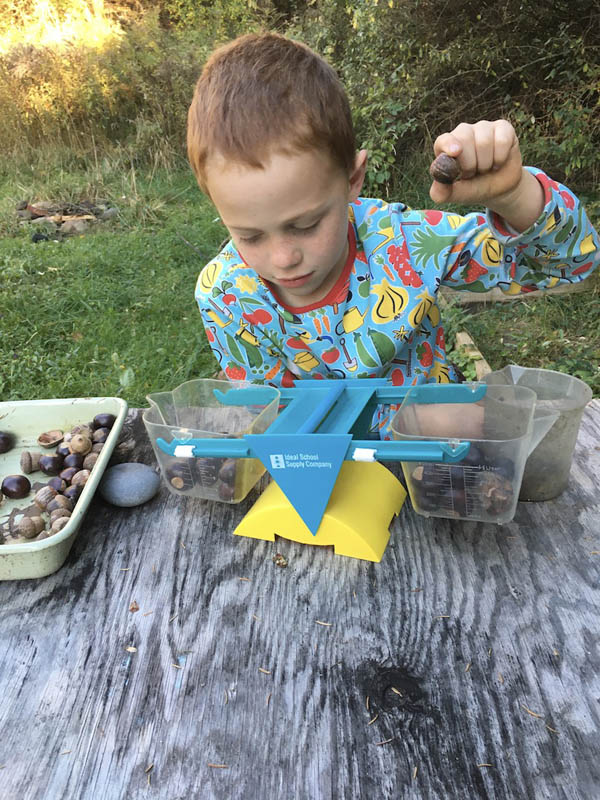

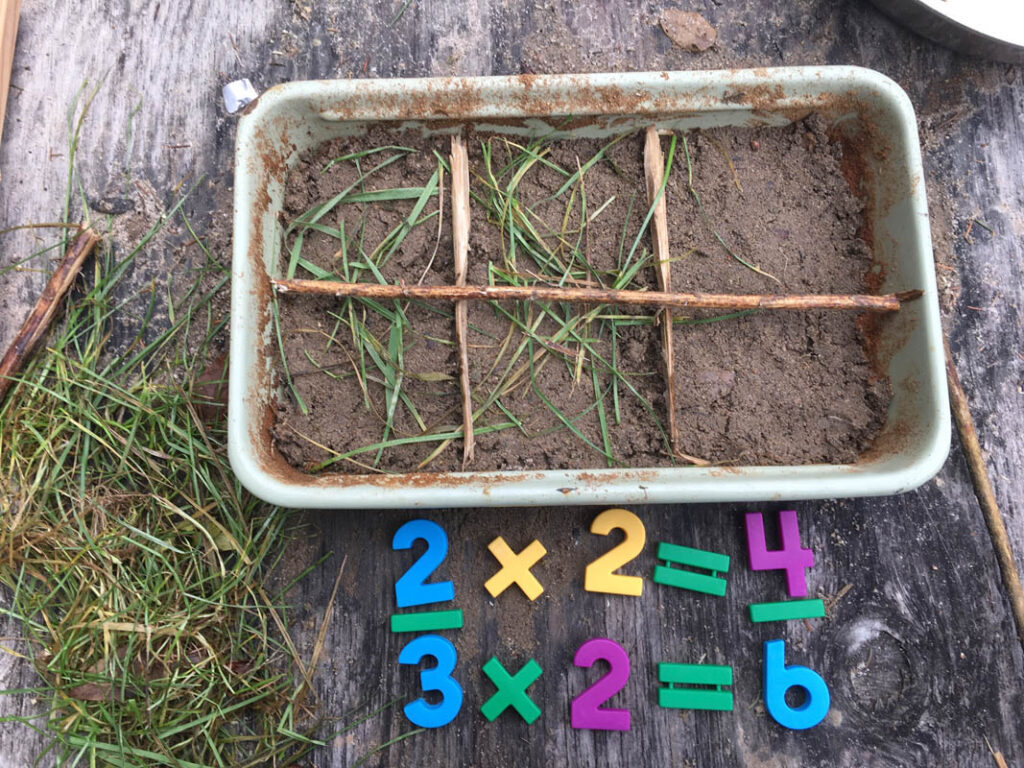



Wild Math® takes math outdoors where it is naturally hands-on, engages all of the senses, and includes plenty of movement.
Watch how the natural environment makes concepts more concrete and increases children’s attention spans.
Wild Math® Curriculums cover the typical math skills and standards taught in each grade and provide activities, lessons, and games so that you can take your math instruction outdoors! Each unit also has a list of math picture books and games that are perfect for playing outside in warm weather and inside in extreme weather or on those dark winter evenings.
Year-long plans are now included with all levels of Wild Math.
If you purchased the curriculum before plans were available, they are available for a small fee in the shop!
Yes! Absolutely! I compared multiple curriculums to ensure all the essential skills and concepts were covered in Wild Math®. As a result, the material covered in Wild Math® exceeds the requirements of the Common Core State Standards Initiative. Meaning it covers more concepts and skills than what is required in most public schools in the U.S.
Yes! It complements any math curriculum. Try taking a break from workbooks and spend the day outside, while still getting “school” work done! Simply match the unit you are working on in your curriculum to the same unit in Wild Math® and choose an activity. Some people use Wild Math® as their “spine” and add in other activities or extra practice if they feel their student needs it.
All Wild Math curriculums now include weekly plans for the school year. These are suggestions for weekly lessons and pacing. Feel free to structure you week/year differently to suit your students’ needs.
Yes! Wild Math® is for everyone! The curriculum was written with homeschoolers in mind however, it can easily be adapted to various settings. Many schools, childcare, and classroom teachers use Wild Math®. Some parents have used it at home to help a child struggling with math at school get more practice as a change of pace from workbooks, yet providing practice and reteaching of math concepts.
Of course not! Pick and choose activities, combine them with other math activities, and tailor it for you and your students. Do what works for you and your student/s. I am a huge advocate for learning outside, as there are many benefits. However, I am also aware of the fact that it probably is not realistic for everybody all of the time. That is OK. If you’re having trouble getting outside or you are intimidated by this much outdoor math, I suggest starting small and planning one or two lessons per week of outdoor learning and increase your outdoor time as you feel comfortable. There are also lots of board games, and book recommendations included. These are great in the middle of winter when many of us are outside less and the days are shorter.
We now have a Youtube channel to help you teach more difficult topics and give you even more ideas! Check it out and subscribe!


Kindergarten math is meant to be active and fun! You’ll find all the units and skills typically covered in kindergarten math, plus practice activities. Build a solid foundation in numeracy skills through activities such as collecting and counting natural materials, mud pie activities, and using flowers in ten frames.
Math Units covered: counting and cardinality, place value, patterns and symmetry, beginning addition and subtraction, measurement and data, and geometry.
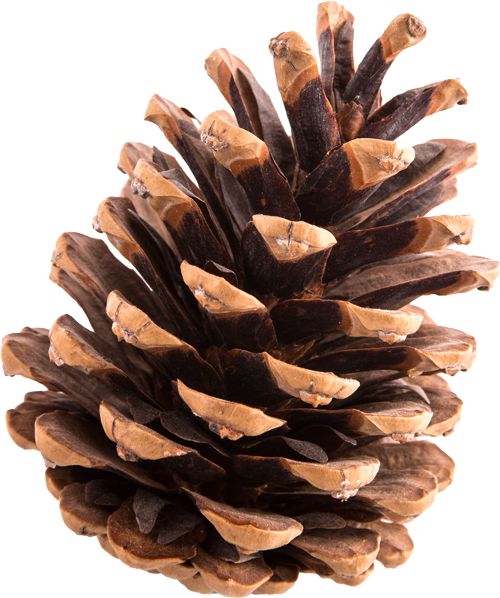
Use what is naturally abundant in your area to learn first grade math! Use pinecones, rocks, or seashells to learn addition and subtraction facts, learn and classify shapes made with sticks, and practice data collection and graphing by observing the natural world.
Math units covered: numbers and place value, Patterns, addition and subtraction facts, advanced addition and subtraction, measurement and data, time and money, and geometry.
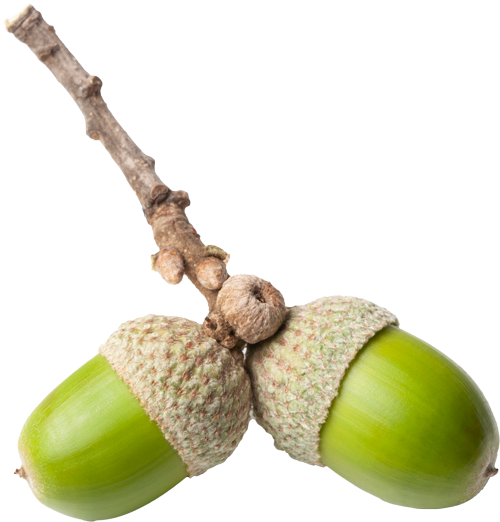
Make your second grade math year active and fun! In second grade, children use bundles of sticks to explore place value and multi-digit addition and subtraction strategies. Mudpies help to visualize fractions and leaves and flowers are used to practice skip counting.
Math units covered: place value, addition and subtraction fact review, multi digit addition and subtraction, multiplication, fractions, measurement, time and money, graphs and data, and geometry.

Third grade we build on our prior math skills and explore multiplication in the natural world. Use plants, animal life, and natural materials to model multiplication and division facts!. Discover the relationship between perimeter and area by measuring gardens, playgrounds, buildings, and tiles.
Math units covered: place value, multi-digit addition and subtraction, multiplication and division, fractions, measurement and data, time and money, and geometry.
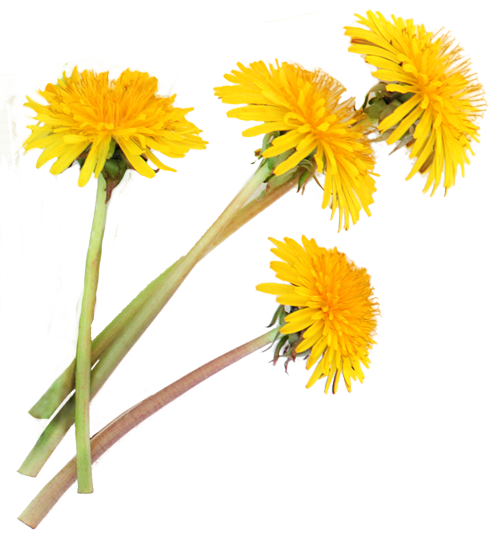
Learn fourth grade math in a classroom without walls! Children will learn to solve multi-digit multiplication and division problems using a variety of strategies and nature-based projects. Use pinecones, rocks, or seashells to make multiplication arrays and find factors. Model multiples with stick bundles and use recycled materials to explore volume.The fourth grade curriculum contains more guidance for teaching those trickier topics such as division and fractions!
Math units covered: place value, multi-digit addition and subtraction (review), multiplication (including multi digit multiplication- traditional and lattice method), division (including long division- traditional method and box/area method), fractions, decimals, data and probability, geometry, patterns and algebra, time, and measurement.
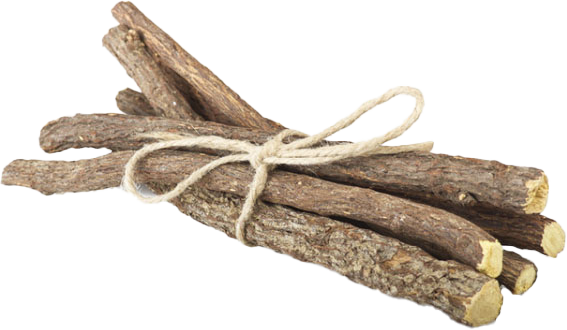
In fifth grade, math is a useful tool for exploring and understanding the world around us. We can use it to construct and build, answer questions, and do sophisticated calculations. The 5th grade curriculum utilizes mudpies and cakes to model fraction operations and use place natural materials to model decimals! The fifth grade contains more guidance for teaching math concepts than prior levels.
Math units covered: review of multi-digit multiplication and division, decimals, fractions, measurement, data and graphing, algebra, geometry, and measurement.


Wild Learning® LLC | Privacy Policy | Copyright 2024 | To contact us or for permission to use images please email: support@discoverwildlearning.com
I acknowledge that the land where I live (Ithaca, NY), work, and gain inspiration from exists within the unceded territory of the Gayogo̱hó:nǫʼ (Cayuga Nation), which is part of the Haudenosaunee Confederacy. I acknowledge their stewardship of this place throughout the centuries and today.
Website design & development by Flourish Design Studio, Ithaca, NY